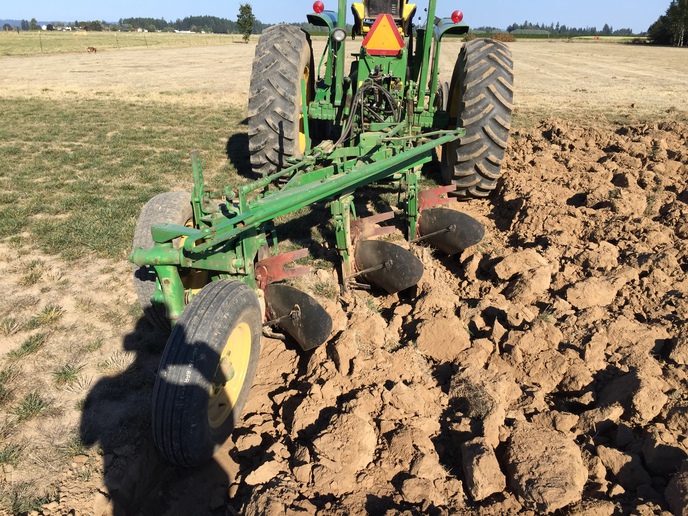Bryce Frazier
Well-known Member
How challenging is it to plow DRY land.
Basically, here is the dilemma. I guy a mile away gave me 6-7 acres to farm. Said I could do what I want with it. Right now, it is lumpy / scattered sod, hasn't been farmed in 20 years. Had 13 trees in it, but I am working on getting those all ripped out with the backhoe. Fair number of rocks.
Property is fairly square, and I will be plowing ACROSS a side hill (nothing dangerously steep or anything) It is sandy/dirt rather than the thick clay we have at home. Right now, there is some wild grass in it, and maybe a few weeds, but fairly clean I must say!!
We haven't had rain for months up here... It is really really really dry, everything is hard. Digging around up there with the backhoe, it isn't as hard as I thought it would be, but not "ideal" for plowing.
SO, is it possible for me to plow it under?? I really want to get it rolled before winter, so it can sit there idle all winter, then I can just plant it over come spring. Don't plan on discing or anything, JUST plowing. Don't have much plowing experience, just wanted to see what you guys thought... Bryce
Basically, here is the dilemma. I guy a mile away gave me 6-7 acres to farm. Said I could do what I want with it. Right now, it is lumpy / scattered sod, hasn't been farmed in 20 years. Had 13 trees in it, but I am working on getting those all ripped out with the backhoe. Fair number of rocks.
Property is fairly square, and I will be plowing ACROSS a side hill (nothing dangerously steep or anything) It is sandy/dirt rather than the thick clay we have at home. Right now, there is some wild grass in it, and maybe a few weeds, but fairly clean I must say!!
We haven't had rain for months up here... It is really really really dry, everything is hard. Digging around up there with the backhoe, it isn't as hard as I thought it would be, but not "ideal" for plowing.
SO, is it possible for me to plow it under?? I really want to get it rolled before winter, so it can sit there idle all winter, then I can just plant it over come spring. Don't plan on discing or anything, JUST plowing. Don't have much plowing experience, just wanted to see what you guys thought... Bryce


